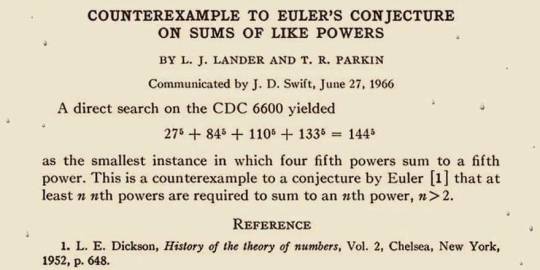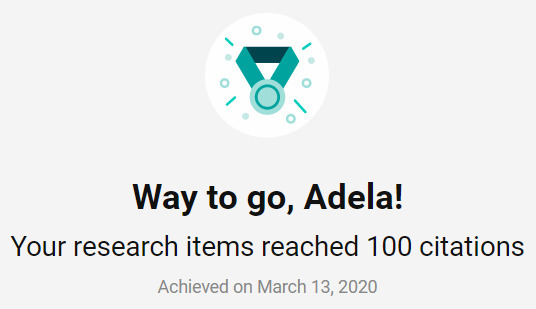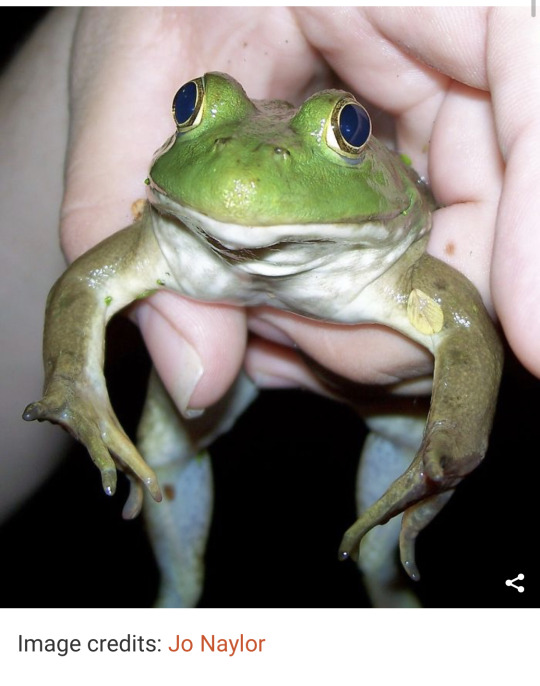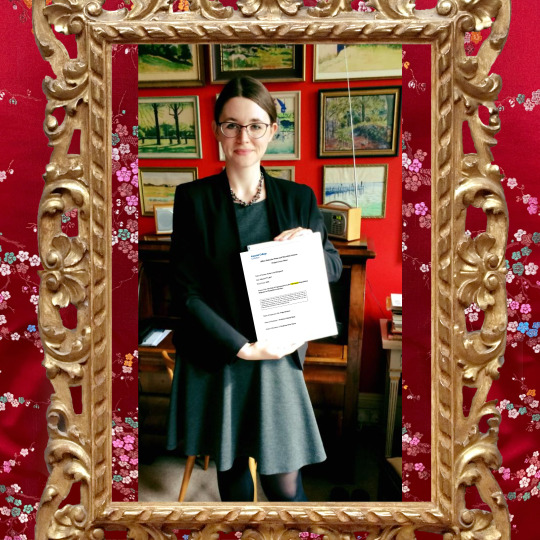#scientific writing
Text
Shortest math paper ever.
And with so much impact! It just disproved a widely accepted theorem from the year 1769 in 5 rows!!!
I'll never publish anything even remotely badass like this! But I want it so much!!!

#badass#badass science#science#research#mathematics#math#stem#scientific writing#publication#academia#cool science
610 notes
·
View notes
Text
Desperately trying to appease the ADHD demon with chocolate so I can meet my writing deadline… it has cost me half the bar for two sentences. My brain is fighting my real responsibilities hard today…
#adhd problems#scientific writing#literature reviews are the bane of my existence#what if I just read the papers and you believed me
8 notes
·
View notes
Text
#science#science communication#scicomm#stem#science education#science blog#biology#environmental science#charles darwin#evolutionary biology#evolution#scientific research#scientific writing
3 notes
·
View notes
Text
24.04.2024
Quests for today:
Out of bed at 5:40 latest✅
Rowing at 6:30✅
Breakfast✅
Edit dissertation into perfection
Lunch in hall ✅
Coffee with friend at ~2
DoS meeting at 4:30
Eat tea at hall
Check references and grammar for dissertation
Read through printed off final draft and edit
Shower
Full moon ritual
I'm going to need so, so much caffeine. I have a monster in my room waiting for me to wake up to it.
Sunday feels like a week ago already. How was it only two days ago?
We've done the majority of the work of making the sword, we just need to do this last bit of hammering and quenching and then we can deal with adding on decorative sections and filing down the blade to a sharp edge. The words are all there I just need to ensure that they are Good Words now (which is the truly horrible bit).
And then we can go back to making lots of little daggers and curios and the like, instead of an absolutely enormous longsword. It's saying a lot about this dissertation that I'm actually looking forward to doing revision essays.
Anyhow. We've got this.
Incepto ne desistam,
- Eden
#uni life#realistic studyblr#university student#chaotic academia#diary blog#studyblr#study#study blog#study hard#student#studying#writing#scientific writing#dissertation#cam#cambridge life#cambridge university#rowing life#rower#rowing#i'm a night owl why do i do this to myself#i must be a masochist istg
3 notes
·
View notes
Text
HEY SCIENCE TUMBLR!!!
hello! we are a little science community that has been in existence for around a year but is now planning to fully bloom into something big!
and we are currently looking for members!
PHYSICA is a sci-comm volunteer youth-led org that will focus on advertising the importance of scientific literacy, along with providing skills within science communication to its members - we are talking about improving our abilities to read and talk about current research, and improving access to science communication to vulnerable populations.
apart from that, we will host regular webinars with current scientific communicators - engineers, scientists, researchers, teachers, artists, bloggers, and anyone who has ever made science more understandable and accessible for the community they are in. as a member, you will not only be participating in those webinars, you will be giving active feedback as to who we invite next!
things we plan to come out with :
1. an opportunity for artists who talk, paint and write about things related to science/the environment/the universe to submit their work to be regularly featured across our social media and website
2. our very own digital magazine in which writers, artists and designers will be able to collaborate in discussing today's research that makes us believe in tomorrow
3. building a community of people that care and believe in science
you want to write an article about the construction of the james webb space telescope or about the new batch of dino bones that someone just found? wonderful! write with us!
you like to draw trees, fishes, birds and forests? great! we will have an article on environmental science for you to illustrate!
we need web developers (hi wix people), editors, graphic designers, social media managers and more!
want to make a difference in the way science is learned, taught, and talked about? fill out one of the forms on this link!
would you potentially be interested in helping host a webinar about effective, equitable and accessible science communication? are you a data scientist, an artist or someone who interacts with science? message us to collaborate!
sciblr, please boost this!!
#scicomm#passion project#sciblr#stemblr#stem academia#science communication#opportunity#scientific writing#scientific journalism#medical illustration#scientific illustration#medical illustrator#help needed#boost#environmental awareness#science#studyblr#chemblr#bioblr#physblr#physicsblr#enviblr#writeblr#forensics#sciart#physics#chemistry#biology#environmentalism#jwst
8 notes
·
View notes
Text
If anyone ever checked my search history they'd be mighty confused and concerned.
"Signs of PTSD"
"When did humans stop tasting urine as part of diagnostic medicine."
One part of me is writing a MacRiley fanfic.
The other a book on the history of medical laboratories.
2 notes
·
View notes
Text

https://alteritas.net/GXL/?p=5189
2 notes
·
View notes
Text
The Lenses of 'Objective' Studies:
This video essay is in further conversation with my replies to @deerydear 's post where I was commenting on some of my associations with AK Ramanujan's writing.
(Now that I spent all this time on it, I realize the connection is only in my head, but it was referencing: "If I had to go to the library to study a subject, my impression of the subject would be framed based on the books I picked, and the books I picked would be filtered though my interests, questions, aesthetics, etc.")
youtube
(the video was too big to add directly, so I uploaded it as 'unlisted' onto YouTube)
This was part of an all day project that started when I saw a study on spider silk. The Introduction to the study is what got me going on the thought process:

Reading the introduction, it just so happened to be very easy to identify the values going into the research (some articles go straight into nitty gritty chemistry jargon or such):
The red highlights show values towards industrialization. Showing that one objective of the study is increased productivity and commercialization of a product (spider silk)
The green highlights address modern environmental issues the study is trying to address. Ironically pointing out the pitfalls of some textile innovations, and looking towards spider silk to amend them.
The yellow highlights the value of strength. Spider silk is renowned for its toughness.
These talking points aren't unique to this study. This is a product of a larger context of many studies talking about largely the same thing. Going into the citations of this study are studies that also praise spider silk's toughness and are trying to find ways to take advantage of it.
In the video, I mention how silkworms have been a part of Chinese culture for 5,000 years. I would like to further clarify that silkworms, to my knowledge, haven't been cultivated in the US to the same extent that they have in Asia. So China has an advantage and presumably less obstacles in the husbandry of silkworms when trying to bioengineer it with spider silk. It makes sense that an American study would find a different way to mass produce spider silk proteins without the same access.
I wondered, I were to hypothetically be inspired to create a similar study where I live, how would I design it? What problems would I run into? Would living on the West Coast of the USA be a disadvantage? If I couldn't get silkworms, what would I do instead? Would there be value differences in how the study would be approached? Of course, I know little about the subject and I am just an undergrad at a liberal arts college, so I tried looking up if similar studies have been investigated at universities on the west coast. And that is how I found David N. Breslauer's research. His research gave an extra interesting dimension because it wasn't from a university, but patented research for his own corporation after graduating UC Berkeley.
I was interested in where the two studies got their information (and how their questions shaped what they searched for), because of course knowledge is built upon knowledge. I was not surprised that citations for both studies included quite a bit of research that originated in the East Coast USA (Ex. Cambridge). I was a little surprised with how many studies originated from Germany.
I had also written down the departments (if applicable) that were affiliated with the citations of the two studies:
The departments involved in the citations behind the spider silk and silkworms study: Zoology, macromolecular science, textile science and technology, seficulture science, laboratory of silkworm genome biology, molecular biology, applied biological chemistry, agriculture, bioscience and bioengineering, animal science, physical science at macroscale, evolution, ecology and organismal biology, invertebrate zoology, comparative genomics, clinical hemotology and osology, computational biology, applied mechanics, NASA, nutrition, basic medical science, media arts and design, textile machinery and high performance material tech, Spintech Engineering, US Army, DuPont.
Compared to the citations behind the spider silk proteins and yeast study: pharmaceutical research and development (Gentech, Inc.), genetics and biochemistry, US Army Natick Soldier Center, Kosan Biosciences, bioengineering, qualitative biological research, integrative protein science, chemical engineering, GlycoFi, Salk Institute (nonprofit), Naxia Biotechnologies, DuPont
Sources:
High-strength and ultra-tough whole spider silk fibers spun from transgenic silkworms
Development of Synthetic Spider Silk Fibers for High Performance Applications
Bolt Technology MEET MICROSILKTM
Also, If you just want to read about jumping spiders: Risk assessment and the use of novel shortcuts in spatial detouring tasks in jumping spiders
3 notes
·
View notes
Text
How a "normal" STEM human being uses Microsoft Office programs:
Word - papers, essays, reports
Excel - graphs and tables
Power point - Presentations
OneNote - maybe some odd docs
How I use Microsoft Office programs:
Word - template emails, maybe a manuscript
Excel - All of my experimental protocols
OneNote - PDF editor
Power point - ALL MY STUFF literature notes, data screen grabs, actual processed data, things for slapping together presentations, SOPs, educational materials for the undergrads, animations, figures, actual presentations
#chemistry#college#humor#stem#lab reports#scientific writing#steam#graduate school#chemistry students#microsoft office#if anyone knows how Access works i would love to know#or exchange#i think they both got downloaded to my computer#and i am CURIOUS#google doesn't explain how a actual human uses these
3 notes
·
View notes
Text
UV lamps in nails salon
Hello!
Just yesterday, I saw an article with this headline:

It caught my attention because, in Spain, where I currently live, it is fashionable to go to the nail salon every 2 weeks and have a perfect manicure.
The article discusses how UV lamps used to dry nails can cause DNA alterations and cell death. In addition, they found that a single 20-minute session led to 20-30% of cell death, and 3 consecutive 20-min exposures caused 65-70% of cell death. These UV lamps use a wavelength of 340 to 395 nm.
Higher levels of somatic mutations were revealed in the irradiated cells, with similar patterns in skin cancer patients.
Do you guys get frequent manicures? I'll read you in the comments.
#scientific writing#UV#chemistry#nails care#nailcare#medical writing#nature communications#dna damage#cell death#scientists#science
9 notes
·
View notes
Note
Actually, I have some problems for reading and writing scientist articles.
How do you improve the way you reading or writing scientist article? if you do not have abilities for reading. what is your recommendation?
please
Hello!! I should mention I was almost done with this answer and my tumblr app crashed. So i am writing stuff all over again I really hope i don't miss on anything (if i am nit clear on some points just let me know).
So in general practice does the trick, both for reading and writing. I would suggest you start from subjects you know well and are interested into in order to get a clear idea of how scientific articles work.
For the reading part I'd suggest reading multiple times, that is sometimes necessary to fully understand everything. And then highlight the important parts and write notes. The notes have to be your own version of the information, by using your own worss you make sure you ha e understood all the concepts, or else you wouldn't be ablte to do that.
For the writing part practice is the main thing, but also remember that the tone and vocabulary you pick are half of the job. Believe be they change everything. Always use an impersonal form and use specific scientific vocabulary regarding the subject you are writing about. Make sure your sentences are brief and clear as well as well connected to one another. I would recommed creating a list of points before writing. Make sure the order makes sense and follow your list going from one point to another. Also incled an introduction that explains what you are about to talk about and a conclusion that reviews the main points.
Then again practice will make a huge difference, I know it's hard and intimidating at the beginning but you'll get the hang of it my friend. Let me know if there's any more tips you need or if I have not explained myself well enough. Good luck with your work, and believe in yourself you have all that it takes to learn these new skills!!
#ask#asked#asks#answered#cris spreaks#studying advices#scientific articles#scientific writing#studyblr#mine#the---hermit#og posts
21 notes
·
View notes
Photo



Researcher’s dream continues. 🥳🥂🍾
My research papers were cited in 300 scientific studies.
2012 ... 1st paper published as a BSc. student
2019 ... PhD award, start of postdoc, 8 papers published
2020 ... 100 citations
2021 ... 200 citations
2022 ... 11 papers published, others in preparation
2023 ... 300 citations
This is encouraging! Achievements like this bring me joy and motivation to keep doing good science. Especially in times when I feel like the results just don’t come and I have to work really hard for it.
#research#science#women in science#postdoc#university#academia#achievement#physics#biophysics#life sciences#stem#scientific writing#recognition#motivation#hard work is rewarded#let's celebrate#original content
72 notes
·
View notes
Text
Welcome to 'Demystifying Science'!
Date: 2022-08-17, Wednesday
Introduction
Hello to all who are reading this!
My name is Eilidh, and I am a PhD student studying biophysics. I have a goal of becoming a scientific communicator when I graduate in a couple of years, and I thought a tumblr blog would be a wonderful place to start thinking about this. As the title implies, I have a passion for making science accessible to people who aren't in science fields but still like to read about it. I think learning about science can be a wonderful hobby no matter what your job or lifestyle is!
Considering the ongoing COVID-19 pandemic and the initial challenges associated with how the public received information and recommendations concerning the virus, clear scientific communication seems to be rather lacking in today's political, economic, and social climate. I think it's of great importance to be able to communicate science effectively to anyone, and that is my goal for this blog. Of course, I will be learning on the way, so feedback and engagement is much appreciated!
I don't really believe that 'science is hard'. Sometimes it's just explained in a rather non-intuitive way. I used to struggle with science and math when I was younger -- I was always better with reading and writing. I do enjoy math and science, though I find I have to work really hard at it to gain a good understanding. I've had great teachers and professors throughout the years who have helped explain things in terms I found more accessible. I am grateful for them.
Science, above all, isn't just a compendium of facts. It's a process that is used to figure out how the world works. I think that's beautiful, and I hope it can be beautiful for you too.
What this blog will be about (at least in the beginning)
The sun the scientific world revolves around is the journal article. Estimated over a million published per year, the scientific article provides the backbone for advancement and understanding. Without them, science would progress in a vacuum, which would make it slower and the creative environment wouldn't flourish. Sometimes one article can entirely change the course of a PhD (I've seen it happen)! If you wanted to put science learning down to a basic unit, the journal article is it.
My goal with this blog is to help demystify journal articles I and you find interesting, as well as provide updates on the research experiences I go through as a upper-year PhD candidate. I will do my best to explain articles in an accessible way, and it'll help with my goal of reading more, too! If you have recommendations or curiosities, please send them my way! If you'd like information about graduate school in the sciences in general, I'd be happy to answer questions to the best of my ability as well.
If anybody is interested in guest-writing an article for this blog or having an article edited, please let me know via messages! I really like editing work too. I love writing in general and do creative writing as a hobby. I am hoping to turn writing into my career.
I hope everyone who see this will enjoy what the blog has to offer! Apart from the introductory posts, my tentative post schedule will be once per week -- three general posts and one journal article dissection to start. I will let everyone know if this changes due to other circumstance.
Thanks for joining this journey with me, and please consider giving this blog a follow if it piques your interest!
-Eilidh
#introductory post#about me#science#biology#physics#astronomy#biophysics#biochemistry#chemistry#physical chemistry#computer science#machine learning#spectroscopy#lasers#journal articles#journal club#science communication#astrophysics#scientific writing
13 notes
·
View notes
Text
How do you write “I fucked up” in scientific journal speak?
If you want to laugh find the BoredPanda article : “scientist reveal how they use academic language to mask their mistakes and it’s hilarious”
my favorite is the great frog escape


The frog picture 🤣 . It’s so dopey . The sheer look of FTW 🐸 it looks offended, terrified, confused and a bit like a deer in the head lights. Like an awkward year book photo.
#boredpanda#scientific journals#academic writing#scientific writing#frog escape#The great frog escape#Viva la frog#science#biology
4 notes
·
View notes
Photo

Throwback Thursday to my Masters of Research at Imperial College London! I am holding my first research report as a printed copy.
Here is the abstract:
Katia Hougaard, Project 1
The Role of Lipoxygenases in the Chloroplast Degradation Response to Phytophthora infestans
Plants rely on the innate immunity of each cell to defend against disease-causing organisms. Although chloroplasts are best known for photosynthesis, recent research has revealed their importance in plant immunity. In plant defense responses, chloroplasts play a central role in cell signaling and gene expression. Studies show a decrease in photosynthetic activity during pathogen attack, indicating chloroplast functions may be impaired by pathogen activity. Furthermore, according to unpublished data from the Bozkurt lab, chloroplasts lose their stromal contents and degrade during pathogen attack. Currently, the molecular mechanisms of this pathway and its impact on the host or the pathogen remain unclear. Lipoxygenases, a family of enzymes involved in diverse plant processes such as germination, growth, and storage, are potentially significant to the chloroplast degradation response. In several plant species, pathogen attack and wounding lead to the induction of lipoxygenase genes, hinting at their importance in defense responses. Recent research on the 13-LOX pathway in leaf senescence, which selectively degrades chloroplasts to recycle their nutrients by disrupting the chloroplast envelope to release the stromal contents, shows similarities with the chloroplast degradation observed in Phytophthora infestans infection in Nicotiana benthamiana. In addition, new studies show the involvement of autophagy related genes in the degradation of whole chloroplasts compromised by abiotic stress, suggesting a similar process may occur in response to biotic stress.
Our study addressed the hypothesis that one or more of four selected lipoxygenases are essential to the controlled chloroplast degradation response. Using confocal microscopy, we determined that all four lipoxygenases localize to chloroplasts in vivo. By quantifying degraded chloroplasts in infected cells, we found that chloroplast degradation during pathogen attack may depend on at least two of the lipoxygenases. Through studying necrotic leaf lesion development caused by P. infestans infection, we concluded that at least two of the lipoxygenases might influence the defense response. Finally, we conducted a preliminary study focusing on the role of autophagy related genes in the pathogen mediated chloroplast degradation response.
#katia plant scientist#katia hougaard#imperial college london#plant biology#cell biology#chloroplasts#plant immunity#potato blight#plant diseases#plants#botany#science#graduate school#masters of research#masters degree#scientific writing#stem#london#maximalist decor#paintings#red wall#antique furniture#dresses#blazer#business casual#glasses#meganekko#pearl necklace#grey dress#tights
5 notes
·
View notes
Text
Scientific Writing Style: Features

2 notes
·
View notes